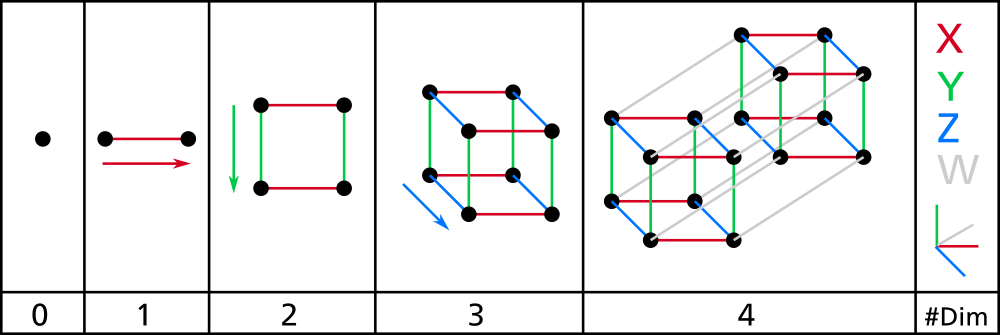We think we live in the 3rd dimension because we can control and manipulate things within it. We’re quite familiar with the universe expressed as units of length, width, and depth because it’s what our biological sensory organs evolved to perceive.
We are less familiar with the 2nd dimension – the universe expressed as units of length and width only. In fact, it may require some explaining to see how the 2D universe coexists with the 3D one we’re familiar with.
An example of a 2D form is the shadow. The shadow is simply the absence of light on a surface. Its form is a function of the 3D object that obstructs the light source. The statement that the shadow is the absence of light implies the presence of light. Just as the presence of 3D object implies that there is such a thing as “nothingness”. Therefore without shadows, our visual perception of the 3D space would be impossible since it is dependent on differentiating light and shadow.
Thus the 2D universe co-exists with the 3D, giving it form and qualities that make it observable.
Similarly, the 1D universe can be thought of as merely the length of the shadow. The 1D shadow-length grows and shrinks as the shadow repositions itself, keeping the 3D object between itself and the light source.
When we think of time as the 4th dimension, it’s easy to conclude that like the shadow, we are trapped in our dimension and our form is entirely defined by the projection of some other form in a higher dimension. That is, our 3D selves are momentary snapshots of our 4D selves which extend infinitely forwards and backwards through time.
Are we trapped in the 3rd dimension?
There’s no doubt that we are absolutely constrained by time. We cannot yet bend and manipulate time the same way we can exert control over the 3D space. However, we are the only biological species that measures time.
We have an awareness of time. In fact, our brains have dedicated regions to reason about time and make predictions about the near future. Many animals have automatic reflex responses to stimuli that work to invoke a response to an anticipated event. We make plans for the weekend. Young adults make career plans about their lives. Economists make predictions about the state of the market in 5-10 years. Recently, algorithms and AI can predict what you’re going to watch next on YouTube better than you can.
I think in the next decade we will create new models and systems that predict our behavior to such precession that it will be akin to predicting the future.
Biological evolution may have taken humanity as far as it can. If we are to continue to evolve as a species, it may be by non-biological means. Gene-editing and designer babies might take us the rest of the way but the evolution that takes our species into the 4th dimension will be technological.

Leave a Reply